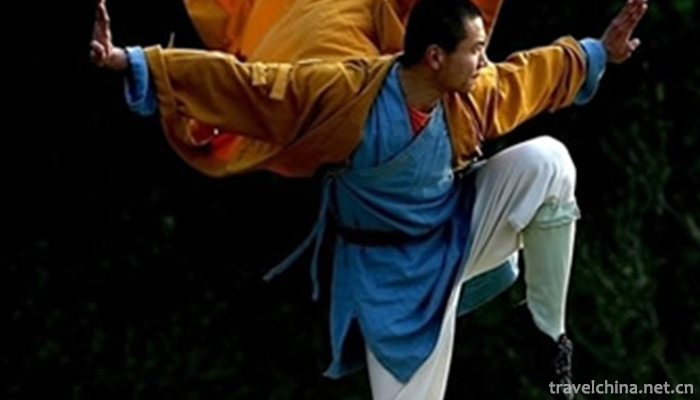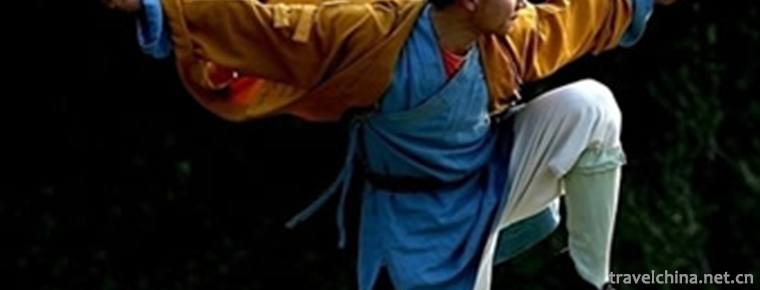Shaolin Kung Fu
Shaolin Kung Fu
Shaolin Kungfu, also known as Shaolin Wushu, is one of the famous schools of Wushu in China. It has a long history and profound influence. It is an important part of Chinese traditional Wushu. The most prominent feature of Shaolin Kungfu is the integration of Zen and Wushu, that is, the practice of Zen into Wushu, so it is also known as "Wushu Zen".
In 2006, it was included in the national intangible cultural heritage list.
Definition of Shaolin Kungfu
Shaolin Kungfu refers to the traditional cultural system formed in the specific Buddhist cultural environment of Songshan Shaolin Temple, which is based on the belief in Buddhist divine power, fully embodies the wisdom of Buddhist Zen, and takes the martial arts practiced by monks in Shaolin Temple as its main manifestation. This cultural system has a complete technical and theoretical system. It takes martial arts skills and routines as its manifestation and Buddhist beliefs and Zen wisdom as its cultural connotation. Shaolin Kung Fu respects Damo as its ancestor. Current academic circles believe that "Damo Chuangquan theory" is a kind of accessory. His practice of martial arts actually began with the monk Fu Zen of the Northern Qi Dynasty.
Main Contents of Shaolin Kungfu
Shaolin Kungfu is rich in content and diverse in routines. According to the records of Shaolin Temple, there are 708 sets of Shaolin Wushu routines, including 552 sets of boxing and equipment routines, and 156 sets of other attack routines, such as 72 stunts, grabbing, fighting, unloading bones, point points, Qigong and so on.
Among them, Shaolin Kungfu mainly includes Shaolin Diamond Boxing, Shaolin Wuhe Boxing, Shaolin Watchdog Boxing, Xinyi Ba, Dahong Boxing, Xiaohong Boxing, etc. The regional division includes Songshan Shaolin Boxing, South Shaolin Boxing and North Shaolin Boxing.
Shaolin instruments mainly include Shaolin knives, guns, swords, sticks, nine-knot whips, concealed weapons, rare weapons (tiger hooks, convenient shovels, Damo sticks, Niujiaoguan, etc.).
Shaolin skills mainly include Sanda and fighting, Shaolin Qigong, Shaolin Dazhao secret, Shaolin point method, Shaolin capture method, Shaolin 72 arts, Shaolin longevity method, Shaolin Temple traumatology and so on.
These are just statistics of the scale of Shaolin Temple Wushu in Songshan. If we take the Southern Shaolin Wushu, the Northern Shaolin Wushu and the popular routines into account, the technical system of Shaolin Wushu will be more abundant.
In Shaolin Kungfu system, cudgel is the most famous. In the Ming Dynasty, Shaolin stick method was well known all over the world. Qi Jiguang, Zheng Ruozeng, Cheng Zongyou, Mao Yuanyi and Wu Xin all gave high appraisal. For example, Qi Jiguang said when discussing Wushu schools: "Shaolin Temple's stick and Qingtian's stick method are combined, Yang's gun method and Bazi's fist stick are well-known nowadays"; Zheng Ruo once recorded in Jiangnan Jinglue the Ming Dynasty's "thirty-one" and "the family of messengers" with the first mention of "Shaolin's stick method"; Cheng Zongyou considered Shaolin's stick method as "the Supreme Bodhi"; Mao Yuanyi wrote his military work Wubeizhi. 》 Zhong believes that "all arts are based on sticks, sticks are based on Shaolin"; Wu Xin at the turn of Ming and Qing Dynasties called Shaolin stick method "the stick family is out of business" .
Characteristics of Shaolin Kungfu
The characteristics of Shaolin Kungfu are that it pays attention to fighting skills and is based on actual combat. Therefore, its routine structure is short, compact, vigorous and swift, flexible in attack and defense, and unified in consciousness and action. There is a way to go in and a way to go out. Therefore, the theory of boxing is that "the body's indulgence, the step's deposit, the hand's entry and exit, or advance or retreat, or rise or fall, all should be concentrated in a consistent manner" .


-
1.Chengdu Panda Base
No. 1375 panda Road, Chenghua District, Chengdu city, Sichuan province
Time 2018-09-28 -
2.Mount Emei
Mount Emei is located in Mount Emei, Leshan City, Sichuan Province, China.
Time 2018-10-13 -
3.Steamed perch with scallion and black beans
Steamed bass cooking techniques are mainly steamed dishes, and their taste is salty and fresh. Steamed perch is one of the famous traditional dishes in Guangdong province
Time 2018-11-02 -
4.Chaomong Ancient Bow String Music
Originated in Inner Mongolia grassland, Chaoer art, known as "cultural diamond", is the predecessor of horsehead art and the unique traditional and ancient musical instrument of Mongolian.
Time 2019-04-16 -
5.Throw stones Lock
Throw stones Lock is an ancient martial arts skill item, which originated in the Tang and Song Dynasties. It has been widely circulated among the Hui people in Kaifeng for a long time. During the Qing
Time 2019-05-13 -
6.Shandong Qinshu
Shandong Qinshu is one of the traditional folk art varieties in Shandong area, also known as "Xiaoqu", "Yangqin", "Shandong Yangqin", "improved Qinshu" and so o
Time 2019-06-13 -
7.Uygur Residential Architecture Skills Aiwan Sailai Residential Construction Skills
Uygur Aiwan Sailai dwellings are mainly distributed in towns and villages along the desert edge of the Tarim Basin, especially in Yutian, Moyu, Minfeng, Pishan, Hetian, Shache and Kashgar along the so
Time 2019-06-26 -
8.Tiger Sheng of Yi Nationality
Tiger Sheng of Yi nationality is a magical traditional dance of Yi nationality. The Yi people worship tigers and take tigers as totems. It has been said since ancient times that tigers are the people
Time 2019-07-12 -
9.University Of Science And Technology Of China
University of Science & Technology China (University of Science and Technology of China) China University of science and technology Located Anhui Province Hefei City By Chinese Academy of Sciences
Time 2019-11-23 -
10.Bowang mountain
Bo (B ó) Wang mountain, also known as Bowang mountain. Bowang mountain is one of the most important breeding and living places of the ancient Bo nationality. It was known as lunzhudadun and shitoudazhai in ancient times
Time 2020-10-16 -
11.Wangjianglou Park
Wangjianglou park is located in the South Bank of Jinjiang River, Jiuyanqiao, dongmenwai, Chengdu, Sichuan Province. It covers an area of 188 mu. It has willow stone fence, wave light building shadow, green bamboo path, pavilions and pavilions. The main buildings are Chongli Pavilion, Zhuojin tower, HuanJian Pavilion, Wuyun immortal Pavilion, liubeichi and spring Pavilion.
Time 2020-10-25 -
12.The second industry of Panzhihua
In 2018, the total industrial added value of Panzhihua was 69.163 billion yuan, an increase of 7.0%, and its contribution rate to economic growth was 59.7%. At the end of the year, there were 325 Industrial Enterprises above designated size. The production and sales rate
Time 2020-12-14